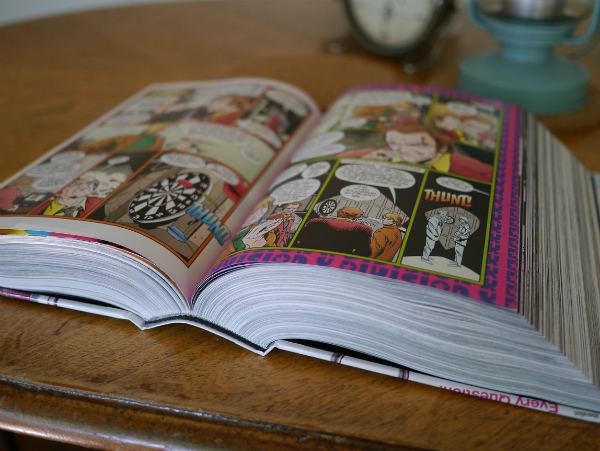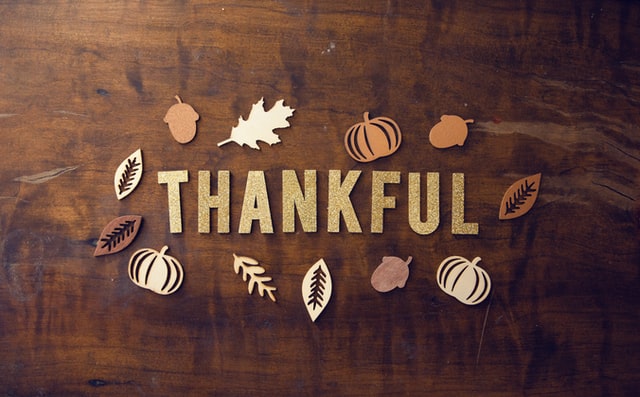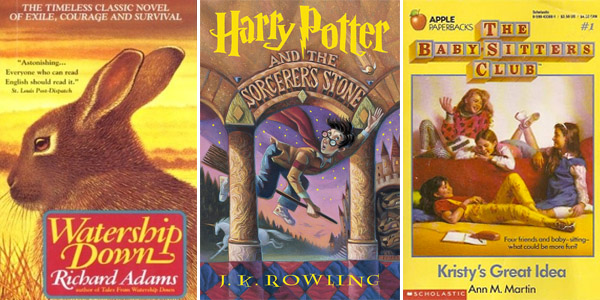THIS BOOK WILL CHANGE YOUR LIFE (Or, Why I’m Thankful for The Invisibles)
(image via Tooth Soup)
"Have you ever wondered why we talk of 'spelling'? There is a spell word implanted in the brain of every English-speaking child, the root mantra of restriction, the secret name of a mighty hidden demon: 'eybeesee-dee-ee-eff-geeaitcheye-jai-kayell-emenn-ohpeequeue-are-ess-tee-youveedouble-you-ex-wyezed'. That name and all the names it generates were designed to set limits upon humanity's ability to express abstract thought. What you see depends entirely upon the words you have to describe what you see. Nothing exists unless we say it."
I love comic books.
I’ve published poetry, plays, fiction, essays, but more than anything, I have always loved comic books. I taught myself how to read with comic books; I taught myself math and computers by using the power ratings on my the Marvel trading cards that my dad used to buy me as incentive after tee-ball and basketball games. This was around 1991, and I’d take those numbers and plug them into Excel or FileMaker Pro on our Mac LCIII and compare and contrast the traits of various characters and basically use those statistics to run my own games of pseudo-D&D/Fantasy Marvel Heroes Trading Cards in my head.
But at some point in the mid-90s, it got too difficult to keep up with everything: I was 10 years old, and there was a ginormous speculator boom of comics overdoing everything and driving the series into the ground. Still, I always tried to stay abreast of the latest Major Continuity Changes and whatnot, and when the first big comic book movie boom started in the early aughts, I was the go-to friend for all things related to comic book accuracy.
It wasn’t until the spring of 2004 (when I was a senior in high school) that I got back into comics, starting with “Planet X,” the penultimate storyline in Grant Morrison’s run on New X-Men. As I went back and caught up on my early-00s Marvel continuity, I devoured the rest of Morrison’s X-Men run, and soon found myself enamored on the mad Scotsman.
Which is what led me as a straight-edge (HA! whoops) college freshman to The Invisibles.
The Invisibles is Grant Morrison’s magnum opus. Even if it was created during the first half of his career, and even if the whole thing is, well, kind of an uneven narrative wreck, and even though he’s produced many more important and groundbreaking and better comics in the 20 years since The Invisibles launched…yeah, as far as I’m concerned, The Invisibles is still the quintessential counter-culture comic book. It’s the genesis of every idea that Grant Morrison has explored throughout his lucrative career, vomited out onto 1536 technicolor of sexy, scintillating, stoner sci-fi superhero action.
It’s a fucking mess, and it is fucking perfect.
For those of you unfamiliar with the book, The Invisibles is basically about every single crackpot conspiracy theory ever all being true at the same time, and the time of sexy rock-and-roll freedom fighters who stand between humanity and total consumption by the forces of evil. Your cast includes a potty-mouthed Liverpudlian punk who is the next incarnation of both Christ and Buddha, a Brazilian Transvestite Shaman, a time-traveling telepath in clown makeup, and a souped-up fictionalized(-ish) version of Grant Morrison himself.
If you were blown away by the pseudo-science philosophy of The Matrix, well, The Invisibles will full-on melt your brain. You’ll also hate it, because it’s frustrating. But that’s part of what makes it so incredible.
And when you’re 19 years old, pursuing degrees in theatre arts and literature, and you’ve been reared on comic books and science fiction and years of playing in punk rock bands but also have an affinity for the works of Shakespeare, Joyce, and Coetzee, you’d be hard-pressed (at least in 2005) to find something that reconciles all of your disparate interests into one high-octane, action-packed, philosophical mindfuck-mish-mosh.
That’s what The Invisibles did for me.
Because of The Invisibles, I discovered The Prisoner. And re-discovered Phillip K. Dick. And Mary Shelley, and the Marquis de Sade (both of whom are characters in the book). It was one of my first forays into metafiction, and it portrayed queer characters in new and exciting ways that I could relate to. It both re-affirmed and challenged my spiritual beliefs. It helped me express the agnosticism with which my Catholic guilt had struggled and gave me new ways to engage with spiritualism that transcended the limited beliefs of my upbringing. It gave a much-needed counter-cultural twist to the Transcendentalist and Taoist beliefs which I’d begun to follow in my final years of high school.
I know it sounds like I’m just throwing every single word possible in a desperate attempt to come off as someone deep and well-read. But that’s what’s so amazing about The Invisibles: it's a mess of stuff. To me, that's part of its charm, but it's also a fair critcism of the series.
Grant Morrison was 34 years old when he started writing The Invisibles, and was 40 years old when the series came to an end. I was 19 years old when I first read the series, and I’m 29 years old as of this Thanksgiving. I try to re-read the entire series from front-to-back every few years, because every time I do, I discover something new and relevant to my life. While Morrison was trying too hard to grapple with every single philosophical topic that had occurred to him at that point in his life (and again — he has continued to explore these same themes and ideas, usually in more contained and coherent contexts, in his subsequent work), that over-ambition is actually part of what I love about the series. As you read The Invisibles, you can see Morrison growing as a person; indeed, he wrote the series to grapple with issues his own life (which you can learn more about in the documentary Talking with Gods).
But Morrison’s ambition in writing The Invisibles was so large, so inconceivable, that it truly reaches out into your life as you read it. And strangely enough, that idea itself — that this comic book series got so out of hand that it surpassed its own creator, and can infect the life of each individual reader in a unique way — actually resonates thematically with the story itself. The very nature of The Invisibles is to be too much, to be too overwhelming; to challenge your beliefs, and then challenge the fact that it challenged your beliefs, and then challenge you to think about the fact that it challenged you to think about the way it challenged the way it challenged your beliefs.
And that’s why I’m grateful for The Invisibles. It’s a beautiful wreck, rich and resplendent with so many layers that it always has me coming back for me and never lets me down. More importantly, as a creator — as an artist and a writer myself — The Invisibles taught me to go big. That it’s okay to go big, to not fit into a round hole that was meant for a square peg. The Invisibles taught me that there is value in being an octagon, and that, as an artist, all those wild and disparate and seemingly irreconcilable facets of the self should be embraced and celebrated. Because even if the final product is, well, kind of a clusterfuck, that beautiful clusterfuck can still be you, and that your audience can find answers and truths within that beautiful wreck. Because of Grant Morrison’s crazy 90s counter-culture experiment, I learned to embrace my own weird, that if it’s okay to combine ancient Egyptian scarab rituals with the ghosts of the Beatles, then it’s okay for me to love the X-Men and the Velvet Underground as much as I love Samuel Beckett and Weezer, and that those things don’t all have to be mutually exclusive.
Once upon a time there were limits on what art and stories were considered "acceptable," or "canon," or "respectable." But now? Our sentence is up.



